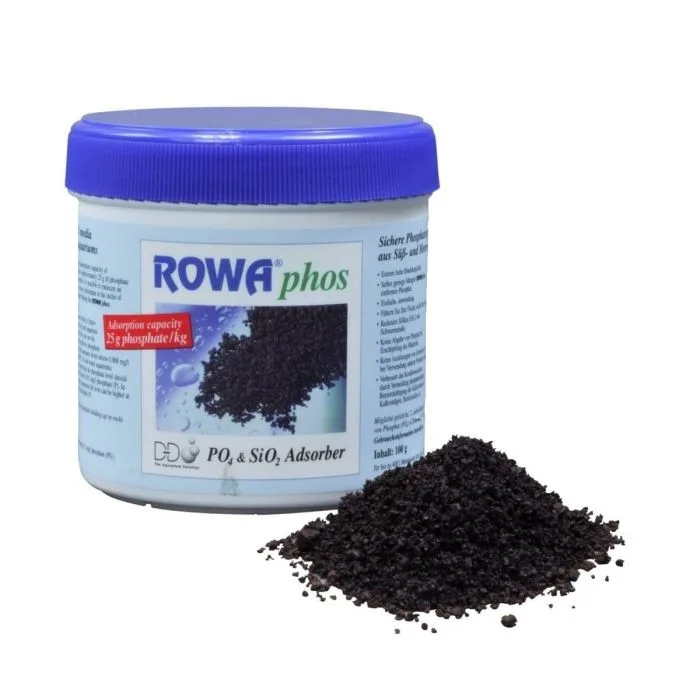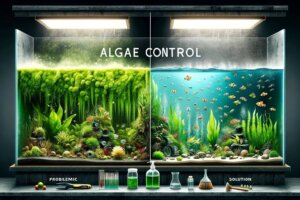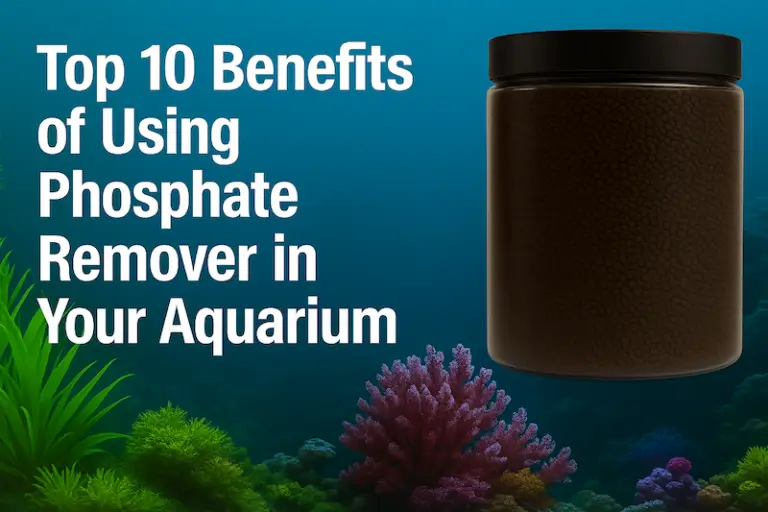Algae Control: Tips for a Crystal Clear Aquarium
Regular Maintenance
1. Water Changes: Regular water changes are essential in removing nutrients that algae thrive on. Aim to change 10-20% of your tank’s water weekly.
2. Clean Substrate and Decorations: Use a gravel vacuum to clean the substrate and remove algae from decorations and tank sides with a scrubber or algae pad.

Control Lighting
1. Limit Light Exposure: Algae need light to photosynthesise and grow. Limiting your aquarium’s light exposure to 8-10 hours a day can help prevent excessive algae growth.
2. Use a Timer: Automate your lighting schedule with a timer to ensure consistent light periods, which can help prevent algae blooms.
Nutrient Balance
1. Avoid Overfeeding: Overfeeding your fish can lead to excess nutrients in the water, which fuels algae growth. Feed your fish only as much as they can consume in a few minutes.
2. Plant Heavily: Live plants compete with algae for nutrients. A well-planted aquarium can naturally reduce the nutrients available for algae, helping to keep it under control.
Chemical and Biological Solutions
1. Algae Eaters: Introduce algae-eating fish or invertebrates, like otocinclus, siamese algae eaters, or nerite snails, to help control algae growth.

2. Use Algaecides Sparingly: While algaecides can be effective, they should be used as a last resort due to their potential impact on the aquarium’s biological balance. Always follow the instructions carefully.
Related Articles:
- Top 10 Benefits of Using Phosphate Remover in Your Aquarium
- Top 5 Plants for a Freshwater Aquarium: A Comprehensive Guide
- Top Tips for Setting Up Your First Aquarium
- The Essential Role of RO Water in Aquarium and Pond Maintenance
Equipment and Filtration
1. UV Sterilisers: UV sterilisers can be effective in controlling algae spores in the water column, helping to prevent green water.
2. Phosphate Removers: High phosphate levels can encourage algae growth. Consider using phosphate-removing media in your filter if tests indicate high levels.

Monitoring and Testing
1. Test Water Regularly: Regular testing of your aquarium’s water for nitrates, phosphates, and other nutrients can help you identify imbalances that may encourage algae growth.
2. Observe and Adjust: Keep a close eye on your aquarium for signs of algae and adjust your maintenance routine, lighting, or nutrient management as necessary.







